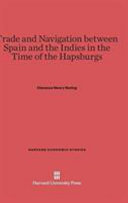Product desciption
Trade And Navigation Between Spain And The Indies In The Time Of The Hapsburgs Clarence Henry Haring by Clarence Henry Haring 9780674182936, 9780674182929, 0674182936, 0674182928 instant download after payment.
This historic book may have numerous typos and missing text. Purchasers can download a free scanned copy of the original book (without typos) from the publisher. Not indexed. Not illustrated. 1918 Excerpt: ...note 2. The unit referred to is probably the ducat. 1 Ibid. Navarrete was copied by Gil Gonzalez Davila (Teatro de las grandczas dela Villa de Madrid, 1623, pp. 471 f.); and later in the century probably by Sol6rzano De Indiarum Jure, 1629-39, lib. v, cap. 1), and by Nunez de Castro (Solo Madrid es Corte, 2d ed., 1669, lib. i, cap. 13). 'Ibid. 4 Alonso Morgado, in his history of Seville published in 1587. burg and Valois began to oppress Europe, and French corsairs were swarming about the Azores. In the Indies, too, while the gold washings on the islands were failing, Spanish energies were directed toward the reduction of the Aztec provinces of Mexico. It was not till later that the wealth of New Spain compensated for the decline of insular gold production.1 After 1535, when it became the practice to accumulate American treasure on occasional armadas, the receipts of the Casa in certain years were unusually heavy. Thus, with the arrival of the squadron of Blasco Nunez Vela in 1538, there were over 371,000,000 maravedis credited to its treasurer. The gold and silver for the king on this fleet amounted to 280,000,000 maravedis, or about 750,000 ducats,2 most of it from Peru. Of the Peruvian treasure, about 268,750 ducats were in gold, and 335,000 in silver. There were also nearly 80,000 ducats from Cartagena, 208 ducats worth of pearls, and a gold nugget weighing over fourteen pounds and worth 1630 ducats. The rest of the treasure came from Central America and the West Indian islands.3 The fleet of Martin Alonso, which entered San Lucar in June of 1543, carried 573,000 ducats in bullion, about equally divided between Peru and Mexico, and over 9000 ducats value in pearls.4 The Peruvian bullion was sent home by the licentiate Vaca de Castro, who had gone out in...


